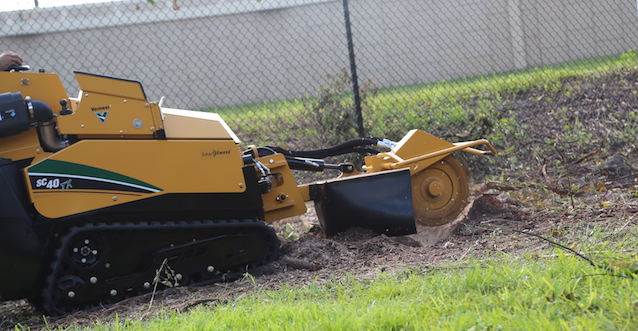It used to be that leaving behind the stump after taking down a tree was acceptable. That’s not often the case anymore as pressure grows on residential and commercial property owners to have impeccable landscaping.
Adding stump removal to your business may allow you to bill yourself as a full-service tree care provider and pick up more jobs. The service, which is also called stump grinding and stump cutting, could help keep a customer from searching for another contractor to do that portion of a job, and possibly choosing a competitor to do the entire job.
To help grow your business, try these tips for including stump removal in the tree care services you offer.
Right choice?
First, evaluate whether offering stump grinding is the right choice for you. If you’re in an area that already has many tree services that do that work, you want to be careful about entering a flooded market. You may want to consider partnering with one of those companies and using them as a subcontractor.
Make a plan
If you’ve determined demand in your area exists, you’ll want to plan how to add the service in a way that’s most beneficial to your company. It likely will entail buying a stump cutter machine, and possibly a truck and trailer, along with having qualified people to properly and safely operate equipment.
You’ll also want to research what to charge for the service in your market. Contractors often bid stump removal jobs by the inch, by the hour or at a flat rate. Some tree services also will bid jobs in stages: (1) stump removal only, (2) stump removal and cleanup, and (3) stump removal and cleanup with resodding and seeding.
Machine selection
There are two basic kinds of stump cutters — tow-behind units and self-propelled units. With a tow-behind machine, operators will have to use a pickup truck to position the stump cutter into place. With a self-propelled unit, operators can park the trailer, unload the machine and drive it to the stump.
Once you’ve decided what type of unit will work best for your business, you’ll want to make sure you match the machine’s size, horsepower and features to the size of jobs you intend to tackle. In recent years, contractors have been looking for more horsepower in small machines. Higher horsepower generally allows for improved productivity, which can allow you to complete more jobs in less time.
You will also want to weigh whether to get a tracked stump grinder or one with tires. Tires may enhance maneuverability and could have lower maintenance needs, but tracks can offer improved stability in difficult conditions and minimize ground disturbance.
You also should compare the safety features of machines and the service provided by local dealers. Look for a reputable dealer and manufacturer that knows the business and will be there when you have questions or your equipment needs service.
